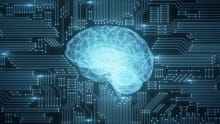New business horizons and their impact on learning
Get Set Learn Read similar articles

Having been pushed out of our traditional office setting into a hybrid or remote workplace, the way we conduct our work took a U-turn for good. The way we collaborate, lead, delegate and connect - all turned virtual. Because of the uncertainty that informed the talent market, power skills, such as problem-solving and decision-making, became highly valued. As a result, developing your power skills became a priority to succeed in the digital age. Having future-oriented skills and having to deliver on them immediately made L&D a core business enabler, and it continues to be one.
New-age skills snapshot
Gartner predicts that work will continue to be volatile in 2022 with the continuing changes in hybrid, annual compensation, and societal issues. Mercer's Global Talent Trends 2022 Survey indicates that executive focus is on talent attraction and retention, with 66% saying they face labor shortages. Consequently, the talent and skills landscape will remain dynamic. The pandemic caused people to rethink their priorities and values, emphasizing fairness, flexibility, safety and wellbeing, diversity, equity, and inclusion (DEI), and learning culture. Leaders realized the importance of listening, learning, and adapting to identify and address unmet needs in uncertain times. L&D and business leaders must build agile skills-based organizations to accomplish this.
How to build the skills of the future
Organizations can empower workers to realize their full potential by instilling a culture of lifelong learning, democratizing employment opportunities, and paving a pathway to employee wellbeing. Some of the ways to do this are:
- Use HR technology to map skills needs: Business leaders must invest in workforce planning and analytics platforms to align their skill sets with market demands. Technologies can fill critical skills gaps using market data on skill pricing and availability.
- Tailor upskilling-reskilling programs: It is essential to target learning based on employees' skill requirements to close current and future skill gaps. Blended learning can support. Learning solutions must supplement digital media such as live trainer-led sessions and personalized on-demand modules with experiential learning opportunities such as rotations, short-term projects, internal gigs, and peer-to-peer learning.
- Incentivize learning: Encouraging employees to acquire skills by rewarding them for completing courses or certifications, assigning kudos for gamified learning contests, and offering peer-to-peer learning rewards are excellent methods for motivating employees. To make learning accountable, link it with performance KPIs.
- Communicate and engage: Education programs are frequently designed and made available but are not effectively utilized. Transparent and regular communication can help employees ensure their employability and raise the bar for organizational learning by communicating which skills are most in-demand and most valued.
For organizations to become skills-based, it is crucial to align skill-building with the 'Future of Work,' which will fuel a ready supply of skills at the 'moment of truth.' The top three learning agendas for L&D executives are identifying and delivering learning programs (61%), building strategies to provide learning programs (58%), and communicating the importance of learning programs to employees (47%).
The biggest challenge facing L&D leaders, even after an investment of time and resources, is funding from the top. As such, it is the L&D and HR leaders' job to highlight the learning outcomes of the CXO suite, such as increased employee productivity, reduced talent attrition, and agility to upskill employees in real-time. As a result, leaders will realize the importance of learning for improving resilience and performance within a business, despite rapidly changing processes.
This article is co-written by Rhucha Kulkarni




